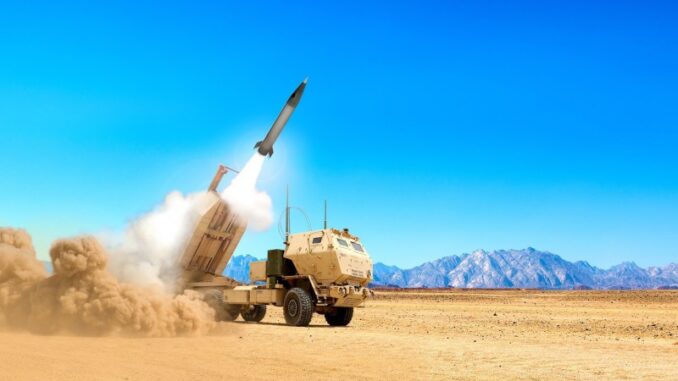
The Army is seeking a new mid-range missile system that can hit targets between 500 to 1,500 kilometers, or 310 to 930 miles, to help fill a gap in its fires portfolio by 2023.
Brig. Gen. John Rafferty, director of the Long-Range Precision Fires Cross-Functional Team, said the surface-to-surface launch capability could prove beneficial if positioned in strategic areas such as the Pacific island chains.
“What a dilemma that would create for our adversary,” he said Sept. 29, referring to China, which the National Defense Strategy states as a near-peer threat along with Russia. “How we would change the calculus in a second, if we could deliver this kind of capability out there.”
The endeavor is currently being researched by his team in a partnership with the Field Artillery School, Fires Capability Development Integration Directorate, and Rapid Capabilities and Critical Technologies Office.
Precision fires is currently the Army’s No. 1 modernization priority, since they can allow formations to penetrate through enemy anti-access/area denial capabilities, Rafferty said.
“It enables access at the strategic level and it enables combined arms maneuver at the tactical level,” he said during the 2020 Army Fires Conference.
Extended Range Cannon Artillery
The fires portfolio also includes the Extended Range Cannon Artillery, a self-propelled system built onto a Paladin Integrated Management howitzer chassis. But ERCA has more firepower with its 58-caliber, 30-foot cannon tube compared to the Paladin’s 39-caliber, 20-foot tube.
The longer tube and a different chamber, along with improved projectiles and propellant, allow it to shoot artillery shells out to 70 kilometers, or over 40 miles, he said.
After several successful tests, the Army recently sought Soldier feedback of the system during 1st Infantry Division’s rotation at the National Training Center in California.
The Army expects to deliver a set of prototypes to a division artillery battalion in 2023, which will then evaluate the operational concept of the system, he said.
Precision Strike Missile
The Precision Strike Missile now has three successful flight tests under its belt. The surface-to-surface missile looks to increase the range of the Army Tactical Missile System, which has been around for nearly four decades.
The PrSM is half the size of its predecessor that has a maximum firing range of only 300 km, or 180 miles — nearly half of the PrSM’s 500 km range. Both missiles pack the same explosive punch.
The next phase of testing will include four shots, one of them to be fired out into the Pacific Ocean from the Californian coastline.
“We’ll go to Vandenberg Air Force Base and we’ll test it out into the ocean and see how far it will go,” Rafferty said.
Strategic fires
At the farthest end of the portfolio includes two complementary systems: a long-range cannon system and hypersonic weapon.
The surface-to-surface capabilities will push the Army’s reach to thousands of kilometers, he said.
The Army and Navy successfully tested a common hypersonic glide vehicle across the Pacific in March. An Army unit is slated to start training on the system without the live rounds next year. And after additional tests, the weapon will be fielded to a missile battery by 2023.
To help offset the cost of hypersonic weapons, the Army is also looking at a strategic long-range cannon capable of firing a higher volume of rounds that are less expensive, Rafferty said.
The cannon, which is expected to fire rounds out to 1,000 km, or 620 miles, is currently a science and technology investment led by the Armaments Center at Picatinny Arsenal, New Jersey.
But the project is not without controversy, Rafferty said, adding its feasibility is now being examined by the National Academies of Sciences, Engineering, and Medicine.
“We’re going to get a fair evaluation,” he said. “They appreciate the operation and utility in our approach of a volume of fire with more affordable projectiles.”
Even if the system is not expected to be fielded soon, the general said that science and technology projects such as this one will also help with deterrence.
“It’s not just moving units around and fielding systems,” he said. “It’s also where our research and development is and where our science and technology investment is. So, we’re having an effect with our approach to this.”

Be the first to comment